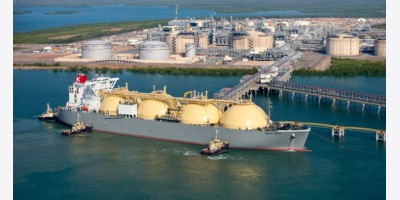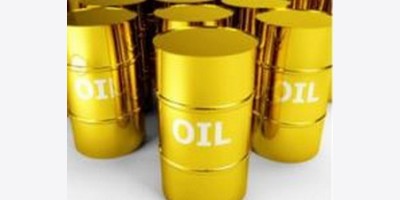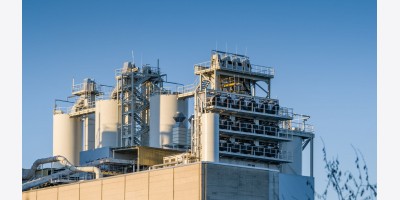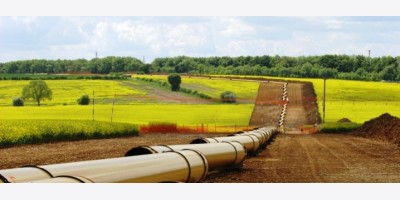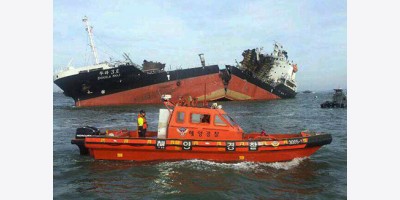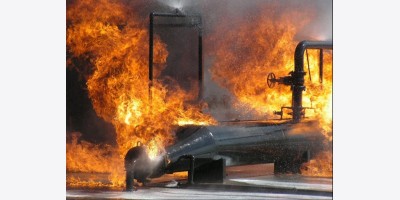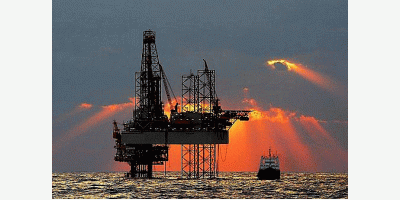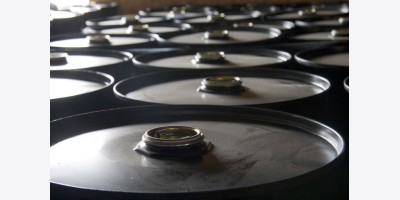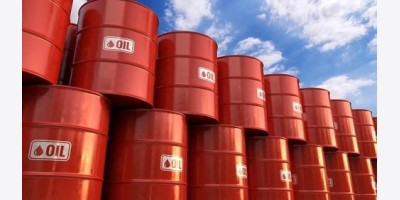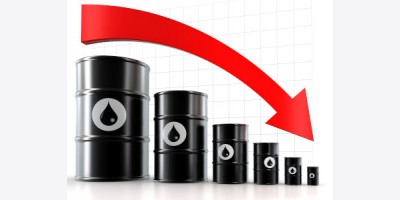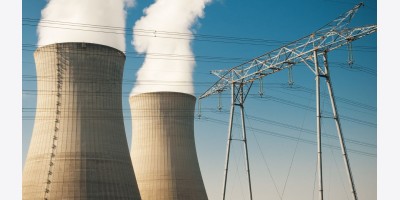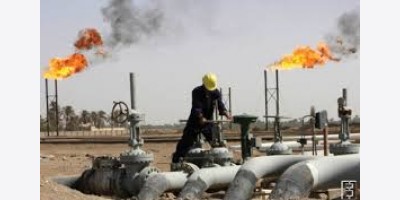
MEXICO CITY, July 8 (RIA Novosti) - Next year the US will begin deliveries of shale gas to Chile, the Chilean newspaper La Segunda reported, citing the country's energy minister.
"The first port, which will start the export of shale gas from the US, belongs to the company Cheniere. The first ships to depart from this port will be carrying the [liquefied natural] gas intended for Chile," the country's Energy Minister Maximo Pacheco stated.
The US companies are interested in exporting gas against the backdrop of the so-called shale boom compounded by low domestic prices, but they require permission from the state authorities for the supply of gas to countries not involved in the free trade agreement with the United States.
In 2012, Cheniere Energy became the first company to receive the US government permission to export the shale gas from Cameron Parish in the southern state of Louisiana.
Chile is the world's largest copper producer, importing about 70 percent of its energy resources, with medium term plans to increase gas consumption.

DUBAI, July 8 (RIA Novosti) - Abu Dhabi National Oil Company (ADNOC) began exporting a new oil blend called Das Crude, Emirati news agency WAM reported.
The first tanker carrying 640, 000 barrels of Das Crude headed for Japan from the port of Das Island, some 170 kilometers north-west of Abu Dhabi. The shipment follows a trial cargo of around 480,000 barrels of Das Crude delivered to India in June.
The Das Crude blend is a light, sweet crude, combining Lower Zakum Crude and Umm Shaif Crude, ADNOC previously produced varieties. ADNOC says Das Crude is fairly competitive and meets international standards.
According to OPEC, the United Arab Emirates is among the six countries with the largest oil reserves. Most of them are located in the emirate of Abu Dhabi. The 2013 data suggest that the UAE produced 2.8 million barrels of crude oil a day.
The oil-rich emirate plans to raise output capacity for crude to 3.5 million barrels a day in 2017, to meet export demand and supply refineries, whereby the Das Crude is seen as a decisive step towards this goal.
Ukraine crisisBRUSSELS -- The European Union (EU) and their member states are ready for talks with Russian Federation and Ukraine on security of gas supply and transit, European Commission President Jose Manuel Barroso Thursday said in a letter to Russian President Vladimir Putin.
"The European Union agrees on your proposal for consultations with the Russian Federation and Ukraine with regard to security of gas supply and transit," wrote Barroso in his reply to a letter by Putin dated April 10.
As supplies to the European Union and supplies to Ukraine are closely related, Barroso said, "it is our common interest to quickly engage in talks which will include Ukraine."
Barroso said the proposed consultations should help to avoid an extreme scenario and safeguard security of supply and transit, "While at the same time creating the necessary conditions for a structured cooperation including notably the modernization of Ukraine's gas transit system."
As Putin warned of the possibility to completely or partially cease gas deliveries in his letter, Barroso "strongly" urged Putin to "refrain" from such measures, saying the "contractual reliability" of the Russia as a supplier of gas "is at stake".
"We reiterate that changes to contractual arrangements due to political circumstances run counter to the spirit of support and cooperation enshrined in your letter," wrote Barroso's letter, which was published online.
Barroso said that the EU's Commissioner for Energy stands ready to contact his counterparts to organize a first meeting.
By Grant Smith Jul 7, 2014 6:00 AM GMT+0700
0 Comments Email Print

Last month’s escalating violence in Iraq persuaded traders that U.S. oil prices for later this decade should be higher. The prospect America could start exporting more crude strengthened their conviction.
The CHART OF THE DAY shows gains in West Texas Intermediate futures for 2017 contracts onwards, first in the period when Islamist militants captured towns in northern Iraq, and then after the U.S. Commerce Department confirmed its approval of the shipment of lightly-processed condensate.
The threat to Iraq’s oil facilities prompted the International Energy Agency to curb capacity growth forecasts for the nation that’s supposed to add the most new barrels to world markets by 2035. Brent crude, the global benchmark, rose to a nine-month high after the fighting and longer-term prices for the grade also rallied. The U.S. decision on shipping condensate is a step toward relaxing its general prohibition on crude exports, according to Citigroup Inc.
“This has given some added oomph to WTI,” Seth Kleinman, the bank’s London-based European head of energy research, said by phone July 1. “Iraq got the back of Brent moving, and that’s going to take WTI with it. And then the condensate export move is going to put some wind in the sails of WTI. It should keep on moving.”
Pioneer Natural Resources Co. said on July 25 that the Commerce Department had confirmed the company could ship condensate overseas, provided that it’s first subject to preliminary distillation. Citigroup estimates the U.S. can export as much as 1 million barrels of crude a day by the end of the year, including 300,000 a day of condensate, according to a June 25 report.
Price gains at the back-end of the WTI curve are appropriate because the glut of high-quality crude many traders were anticipating is now less certain, Amrita Sen, chief oil markets analyst at consultant Energy Aspects Ltd., said in a report.
To contact the reporter on this story: Grant Smith in London at gsmith52@bloomberg.net
To contact the editors responsible for this story: Alaric Nightingale at anightingal1@bloomberg.net Tony Barrett
/uploads/content/images/ieVCWSbtUfas.jpg
By Jake Rudnitsky Jul 7, 2014 4:51 PM GMT+0700
Russian crude oil exports declined to the lowest level in at least six years as the nation’s refiners carried out less maintenance, boosting fuels output.
Crude shipments dropped 5.3% to 4.95 million barrels a day in the six months to June from a year earlier, according to CDU-TEK, part of the Energy Ministry. Production rose 1 percent in the same period.
Russian refiners including OAO Rosneft reduced maintenance programs in the first half of the year, halting 15 percent less capacity than a year ago. That enabled them to process more crude as lower export duties on fuel oil and diesel incentivize the output of those products, according to KBC Energy Economics and UralSib Financial Corp., an investment bank.
“Russian refinery crude intake was growing strongly in the first half of the year as the Spring refining maintenance was very mild,” David Wech, managing director at JBC Energy GmbH, said July 3 in an e-mail. “This explains the decline in crude oil exports.”
Fuel oil production gained 5.8 percent in the year to May, reaching a five-year high despite billions of dollars in investment for government-mandated upgrades intended to boost yields of premium products such as diesel and gasoline. Fuel oil, a more polluting fuel used in shipping and power production, accounted for 39 percent of refinery output, ministry data show, compared with less 10 percent in Germany.
“Fuel oil production is increasing as the planned upgrades are taking longer than planned,” said Ehsan Ul-Haq, senior market consultant at KBC.
Export Duties
Russia plans to increase fuel oil export duties, aiming to reach parity with the crude levy by 2015, as it seeks to encourage oil companies to upgrade Soviet-era facilities. The government may not meet the 2015 deadline, Finance Minister Anton Siluanov said last month.
“Small refineries are driving the increase in primary refining and this trend will only stop when the government raises the fuel oil export duty to a prohibitive level,” Alexei Kokin, an oil and gas analyst at UralSib in Moscow, said July 2 by phone.
Most crude exports this month are taxed at $385.20 a metric ton, or about $52.55 a barrel, compared to $254.20 a ton for fuel oil, according to Finance Ministry pricing data. Fuel oil duties were raised relative to crude in 2011.
Refiners will carry out more work this quarter, when a daily average of 512,000 barrels will halt, up from 279,000 barrels in the first six months of 2014, ministry data show.
Fuel oil output rose to 32.7 million tons in the five months to May, the highest since at least 2010, data on the ministry website show. Jet fuel output rose by 14 percent, outpacing diesel at 11 percent in the five months to May, the last month for which ministry figures are available.
The crude export figures are at the lowest since 2008 when Bloomberg started collecting the data. They include transit volumes from former Soviet Republics, with the exception of Kazakh exports via the Caspian Pipeline Consortium and by rail.
To contact the reporter on this story: Jake Rudnitsky in Moscow at jrudnitsky@bloomberg.net
To contact the editors responsible for this story: Alaric Nightingale at anightingal1@bloomberg.net Rachel Graham
Saudis Alert to Enemies on Both Sides of Iraq Schism
By Glen Carey Jul 8, 2014 12:10 AM GMT+0700

Saudi Arabia is a target for both sides in Iraq’s deepening conflict, one reason it has ramped up security levels to confront a threat that’s more immediate than the Arab Spring revolts three years ago.
The world’s biggest oil exporter convened its national security council for a rare meeting under King Abdullah, and has bolstered defenses at the border with Iraq, where militants last month seized several cities and declared an Islamic state. The king vowed to protect the nation’s “resources and territory and prevent any act of terror.”
For the 90-year-old monarch, the threat is twofold. Sunni militant groups, like the Islamic State led by Abu Bakr Al-Baghdadi that now controls parts of Iraq as well as Syria, have historically posed a challenge to the Al Saud family’s rule. Another danger comes from Shiite militias, which struck across the Saudi border in the past and are now being called to arms to help fight the insurgents.
“An al-Qaeda offshoot armed with heavy weaponry and flush with cash wreaking havoc a mere 100 miles from their border is not a dream scenario,” said Fahad Nazer, a political analyst at JTG Inc., a consultancy based in Vienna, Virginia. “It also doesn’t help that at least two Shiite militias have vowed to bring the war to Saudi Arabia.”

No Embassy
Ties between OPEC’s two largest oil producers have been strained since the U.S. invasion of Iraq in 2003.
As the region’s main Sunni power, Saudi Arabia has links with Iraq’s Sunni minority, who dominated the government before the fall of Saddam Hussein and now complain of discrimination under Prime Minister Nouri al-Maliki’s Shiite leadership. There’s no Saudi embassy in Baghdad, and little commercial contact.
The gap has grown wider with the recent violence.
Maliki last month accused Saudi Arabia of “siding with terrorism” by providing financial and moral support, and blamed the kingdom’s leaders for the Sunni insurgency in northern and western Iraq. Saudi Arabia replied that it’s at the “forefront of combating terrorism” and blamed Maliki’s “sectarian policies” for destabilizing Iraq.Islamist ‘Epidemic’
The conflict has raised the risk of a civil war in Saudi Arabia’s neighbor. The Sunni militants have overrun Mosul, Iraq’s biggest northern city, as well as Saddam’s hometown of Tikrit. They’re also fighting for the nation’s biggest refinery in Baiji. The army said it foiled the latest attempt to seize the facility on July 4, killing all militants who took part.
As the Islamists advanced in Iraq, the benchmark Saudi stock index posted its first monthly drop since August. Oil prices jumped in the first days, with Brent crude reaching a nine-month high of $115.71 a barrel on June 19, before paring gains as the conflict spared Iraq’s main oil-producing region in the south. Saudi Arabia said it’s ready to respond to any supply shortage.
Official Saudi support for Iraq’s Sunnis doesn’t extend to extremists like the Islamic State, according to Gregory Gause, a professor of political science at the University of Vermont in Burlington and a specialist in Gulf politics. The group declared a caliphate on June 29 and said it was changing its name from the Islamic State in Iraq and the Levant, or ISIL.
Such organizations, including al-Qaeda, have attacked Saudi targets in the past, and accused the Al Sauds of collaborating with enemies of Islam through their alliance with the U.S. Saudi Foreign Minister Prince Saud al-Faisal has described the Islamic State as an “epidemic.”
Transnational Jihad
While the Saudi leaders don’t like Maliki, they see the Islamic State as “very dangerous to them,” Gause said. The problem is that there are plenty of people in Saudi Arabia and other Gulf states ready to support the Sunni insurgents “financially, politically and even as volunteers to fight,” he said.
Transnational jihadists, not domestic clerics from the Wahhabi school of Islam, have posed the biggest threat to the Al Saud since the kingdom’s formation in 1932. It’s a target because it’s the birthplace of Islam, home to Mecca’s Grand Mosque, Islam’s holiest shrine, and Medina, where the Prophet Mohammed is buried.
Beyond its borders, Saudi Arabia used its armed forces and oil wealth to counter the political risks that emerged during the Arab Spring in 2011. It sent troops to neighboring Bahrain to help crush protests by the Shiite majority there against Sunni rulers.
‘Immediate Threat’
In Syria, where the Islamic State is among the groups fighting against President Bashar al-Assad, Saudi Arabia has backed some of the more moderate rebels while seeking to stop Saudis from joining the war. Jihadi rehab centers have been set up for those who evade the ban.
Egypt received billions of dollars in Saudi aid after the army toppled President Mohamed Mursi, whose Muslim Brotherhood is viewed with hostility by Saudi Arabia because it seeks to bring political Islam to power via the ballot box.
“The Muslim Brotherhood is a medium to long-term threat for countries like Saudi Arabia,” said Hassan Hassan, an analyst at Delma Institute, an Abu Dhabi-based research center. “The Islamic State is an immediate threat. It is openly violent and, most importantly, is more capable of galvanizing jihadi-minded citizens.”
Since a wave of attacks a decade ago, including car bombs in 2006 that targeted the world’s biggest oil processing plant at Abqaiq, Saudi security forces have cracked down on al-Qaeda, pushing many members across the border into Yemen.
Unhidden Ambition
That hasn’t prevented militants from striking the kingdom. Four Saudi soldiers were killed near the Yemen border in two separate attacks by Islamists, Interior Ministry spokesman General Mansour al-Turki said on July 5. Two attackers were killed in a suicide bombing inside a Saudi intelligence building in the town of Sharourah, he said.
A newer generation of Islamist militants is already seeking to recruit young Saudi men, including through social media.
The Islamic State “has never hidden its ambitions about Saudi Arabia,” said Mustafa Alani, an analyst at the Geneva-based Gulf Research Center.
The Sunni insurgents command some support among Saudi Arabia’s dominant Sunni community, making their emergence a domestic political challenge as well as a security risk. The threat from Iraq’s Shiites is different.
Liberation War
In November, the Shiite group Jaysh Al-Mokhtar said it fired six shells into a desert area near the kingdom’s border with Iraq and Kuwait. Since then, with encouragement from Maliki and religious leaders, the Shiite militias who fought Sunnis in a bloody civil war after the U.S. invasion have regrouped to fight the Islamic State.
The elaborate name of one newly formed Shiite militia includes the phrase “Soldiers for the Liberation of Najd and Hejaz,” the Arabic names for the main regions of Saudi Arabia, according to Nazer, who has also worked as an analyst at the Saudi Embassy in Washington.
In the eyes of Saudi Arabia’s rulers, the Shiite threats ultimately emanate from Iran, their main regional rival.
Iran has supported Maliki and has close ties with some of the Shiite militias. It has shown in Syria that it’s ready to help defend its ally Assad. Saudi leaders will be concerned about a similar intervention in Iraq, which unlike Syria borders their own country, according to Alani.
“They can live with Syria, they can’t live with Iraq,” he said. If there are signs of Iranian involvement, “there will be public pressure for counter-intervention. They will have to take measures, and the measures may not only be on the border but inside Iraq as well.”
To contact the reporter on this story: Glen Carey in Riyadh at gcarey8@bloomberg.net
To contact the editors responsible for this story: Alaa Shahine at asalha@bloomberg.net Ben Holland, Mark Williams
Iraq Parliament Meet Delayed as Consensus on Premier Far Off
By Kadhim Ajrash Jul 7, 2014 7:53 PM GMT+0700
0 Comments Email Print

raqi lawmakers delayed tomorrow’s parliament session for more than a month after political leaders failed to reach agreement on a prime minister who can subdue Sunni insurgents threatening to break up the country.
Legislators will now meet on Aug. 12, Mahma Khalil, a member of the ethnic Kurdish alliance, said by phone. The state-sponsored al-Iraqiya television channel confirmed the date. “All the blocs have not reached consensus” on naming a prime minister, a president and a parliament speaker, Mohamed al-Khalidi, a Sunni lawmaker, said.
Prime Minister Nouri al-Maliki, whose Shiite-led government has been criticized by opponents for marginalizing Sunnis, said July 4 that he won’t withdraw his bid to serve a third term. Maliki’s State of Law party won the most seats in elections in April while falling short of an outright majority. Politicians have been deadlocked since then over who will lead Iraq, and the first session of parliament adjourned this month even as the nation risks hurtling into renewed sectarian conflict.
The risk of civil war flared last month after an al-Qaeda breakaway group seized Mosul, Iraq’s biggest northern city, and captured other cities in a rapid offensive. Fighting has continued since then as the Iraqi army seeks to recover territory lost to guerrillas of the Islamic State group.
Mortar fire killed the commander of the army’s sixth division today in clashes in Al-Karmah district, east of Fallujah, according to a military spokesman in Baghdad, Saad Maan. Soldiers killed and captured scores of militants linked to the al-Qaeda splinter group in operations north of the capital and within the city, Maan said.
U.S. Bounty
Islamic State, until last month known as the Islamic State in Iraq and the Levant, or ISIL, is lead by Abu Bakr Al-Baghdadi, an Iraqi with a $10 million U.S. bounty on his head. A video released on jihadist websites on July 5 purported to show Al-Baghdadi delivering a sermon at a mosque in Mosul, a rare appearance by the militant leader. Authorities were checking the video to determine its authenticity, military spokesman Qassim Ata said in a televised news conference yesterday.
Maliki has come under pressure from rival Shiite politicians, their Sunni opponents, Iraq’s top cleric and some of the world’s leading diplomats to help forge a government capable of reaching across the country’s sectarian and ethnic rifts to counter the insurgency.
Ethnic Kurds in the country’s northeast have bolstered their rule over what was already a largely autonomous region, heightening concerns that Iraq may fracture.
To contact the reporter on this story: Kadhim Ajrash in Baghdad at kajrash@bloomberg.net
To contact the editors responsible for this story: Alaa Shahine at asalha@bloomberg.net Mark Williams, Kevin Costelloe
London (Platts)--7Jul2014/902 am EDT/1302 GMT
The refining margin for the North Sea's Oseberg light sweet crude grade has reached its highest level since Platts launched its assessment last year, as outright prices fell and road fuel prices strengthened in Northwest Europe.
Oseberg's cracking margin for refineries in the Amsterdam-Rotterdam-Antwerp processing hub reached $5.83/barrel Friday, the highest level since Platts started publishing its assessment on May 1, 2013.
The cracking yield netback margin is calculated as the difference between the ARA delivered spot price of the grade and the NWE refinery crack yield.
Norwegian grade Oseberg also posted its weakest premium to benchmark Dated Brent since October 2010, dropping to $0.35/b.
Oseberg's Friday outright price of $110.01/b was the lowest since June 10, when the Iraq insurgency created a bull run on crude prices.
"I expect Oseberg and Ekofisk demand to pick up from these levels [due to the stronger cracker margins]," one crude oil trader said.
Slow purchasing of West African crude by Chinese buyers -- something that could divert more WAF oil to Europe -- combined with the potential return of Libyan sweet crude supplies to European markets are exerting some pressure on sweet premiums in the North Sea.
At the same time, with summer demand kicking in, diesel and gasoline levels in Europe are looking healthier.
Gasoline and distillates output would normally be a significant proportion of a barrel of light sweet Oseberg.
--Ciaran Roe, ciaran.roe@platts.com
--Alex Pearce, alex.pearce@platts.com
--Edited by James Leech, james.leech@platts.com
New York (Platts)--7Jul2014/432 pm EDT/2032 GMT
Oil futures settled lower Monday on expectations that Libya will soon resume exports of oil from two major ports.
NYMEX August crude settled 53 cents lower at $103.53/barrel. ICE August Brent settled 40 cents lower at $110.24/b. In refined products action, NYMEX August ULSD settled 1.39 cents lower at $2.9145/gal and August RBOB ended 3.08 cents lower at $2.9890/gal.
Oil futures dipped following reports that Libya's state-owned National Oil Corp. lifted force majeure declarations on the major eastern Libyan ports of Es Sider and Ras Lanuf Sunday.
But analysts, including Tim Evans of Citi Futures Perspective, said that technical issues needed to be resolved, warning that everything could be back to "square one" if the government did not hold up its end of the bargain.
As with all things Libyan, said BNP Paribas analysts Harry Tchilinguirian and Gareth Lewis-Davies, the latest news that crude exports will restart should be treated with caution, given the many previous occasions when promised restarts failed to materialize.
"It is unlikely that the two port facilities can sustain maximum throughput until maintenance on the crude oil pipelines from the oil fields to the ports, which have not been operational for 11 months, has been completed," Tchilinguirian and Lewis-Davies said.
Crude exports in the near term will come from oil stored at the ports that total 4.5 million barrels and 3 million barrels at Es Sider and Ras Lanuf, respectively, the analysts said, and would likely only last for about 13 to 15 days.
"Nonetheless, any additional Libyan barrels [that] may emerge would be regarded as negative for Brent -- a crude of similar quality, and competing in similar markets, to Libyan output," the analysts said.
Evans noted that the oil futures market also seems "comfortable that Russia won't intervene in eastern Ukraine, where the Ukrainian army has been making significant progress in regaining control from pro-Russian separatists.
Concern over Iraq also seems limited, Evans said, despite reports that the next parliamentary session may be postponed over the lack of consensus on a prime minister to lead a new government.
--Alison Ciaccio, alison.ciaccio@platts.com --Edited by Keiron Greenhalgh, keiron.greenhalgh@platts.com
Rio de Janeiro (Platts)--7Jul2014/127 pm EDT/1727 GMT
Brazilian motor-vehicle sales fell 10% in June, ending a disappointing first half of 2014 that has led the country's National Association of Motor Vehicle Manufacturers, or Anfavea, to revise downward its projections for the year, the trade group said Monday.
Total vehicle sales in June, including cars, light commercial vehicles, trucks and buses, fell 10% to 216,653 units from 240,592 units in May, Anfavea said. June's sales dropped 17.5% from June 2013, when 262,641 vehicles were sold.
In the first half of 2014, Brazilian auto makers sold a total of 1.362 million vehicles, down 7.1% from the 1.466 million vehicles sold in the first six months of 2013, Anfavea data showed.
The poor first half caused Anfavea to reverse its outlook for growth in sales, production and exports in 2014, the trade group said.
Brazilian auto sales are now expected to fall 5.4% in 2014, the second-consecutive annual decline in sales after a 0.9% decrease in 2013, Anfavea said. Anfavea had expected auto sales to climb 1.1% to 3.81 million units in 2014, rebounding from the 2013 downturn that ended a 10-year run of record auto sales.
Production, meanwhile, is estimated to drop 10% year-on-year in 2014 after the trade group's initial estimate for the year of 1.4% growth. Exports are pegged to fall 29.1%, down from earlier projections for growth of 1.6%.
The slide also undercuts some of the momentum Brazil's auto industry gained late last month, when the country's Finance Ministry agreed to extend tax breaks on new auto sales until Dec. 31. The tax breaks had been scheduled to end June 30.
The tax break, which has been extended several times after first being introduced in the wake of the 2008 financial crisis, had helped continue a 10-year run of record annual motor-vehicle sales that ended last year. Brazilian auto sales fell 0.9% in 2013.
The June figures were the latest gloomy sign of the impact that slowing growth in Latin America's largest economy and higher interest rates that have made borrowing more expensive for consumers were having on Brazil's auto industry. Automakers also increased prices this year to offset a jump in production costs because of new regulations requiring air bags and anti-lock brakes on all new cars.
Exports, once an important factor in robust sales and production at Brazil's auto plants, have also dropped amid tax increases in neighboring Argentina, which is the largest overseas market for local auto manufacturers. Anfavea and Brazil's Trade Ministry are working together to reverse the decline in exports and increase trade with other members of the Mercosur trade bloc.
Sales of flex-fuel vehicles, which can run on gasoline, ethanol or any combination of the two fuels, totaled 221,487 units in June, down 9.2% from 243,898 vehicles sold in May. FFV sales were also down 17.8% from the 269,444 vehicles sold in June 2013.
June's market share of FFVs within auto and light-commercial vehicle sales was 88.2%, up from 87.6% market share in May. The market share of FFVs was 88.9% in June 2013.
In the first half of 2014, a total of 1.194 million FFVs were sold. That was down from a total of 1.515 million FFVs sold in the first six months of 2013.
The market for FFVs should get a boost from cheaper prices for hydrous ethanol as the ongoing sugar cane harvest increases the supply of the biofuel. Brazilian drivers opt to fill their tanks with gasoline or hydrous ethanol depending on the price of the fuel at the pump. The price of hydrous ethanol, which has a lower energy content than gasoline, is considered an attractive alternative for consumers if it is less than 70% of the price of gasoline.
Motor-vehicle output, meanwhile, was also down sharply in June, according to Anfavea. Total vehicle production fell to 215,934 units, down 23.3% from 281,355 in May and down 33.3% from 323,880 vehicles in June 2013. Output in the first six months of 2014 was 1.566 million vehicles, down 16.8% from 1.882 million vehicles in the January-June period of 2013.
Exports plummeted 31.2% in June to 24,199 vehicles, down from 35,194 vehicles in May, Anfavea said. The June total was also down 51.1% from the 49,444 vehicles exported in June 2013. In the first six months of 2014, exports are down 35.4% at 169,547 vehicles. Brazilian auto manufacturers exported 262,340 vehicles in the same period a year ago.
--Jeff Fick, newsdesk@platts.com
--Edited by Derek Sands, derek.sands@platts.com
Washington (Platts)--7Jul2014/441 pm EDT/2041 GMT
Recently adopted regulations in North Dakota may prompt Bakken oil producers to focus more capital spending on midstream infrastructure, investment bank Raymond James said Monday.
The new rules "could potentially suppress crude oil production," Raymond James said.
The North Dakota Industrial Commission approved rules July 1 that mandate producers to file plans to capture the gas produced in association with oil production and impose production restrictions on operators who fail to meet flaring-reduction goals.
The state wants flaring to be reduced from the current 33% level to 10% by 2020, Raymond James said. After the first year of production, a well must either be capped, connected to a gas gathering line, equipped with an electrical generator that consumes at least 75% of the gas, or equipped with a compression or gas liquefaction system that consumes at least 75% of the gas.
The lack of midstream natural gas infrastructure has forced Bakken producers to flare the natural gas and forgo the valuable natural gas liquids uplift to produce the more valuable oil, the company said.
The North Dakota Pipeline Authority has estimated that 0.35-0.40 Bcf/d of gas was flared in May, the company said. This represents about 33% of current Bakken gas production.
While producers continue to realize very attractive Bakken internal rates of return on oil production alone, many might not realize that the associated gas in the Bakken is some of the richest in the country.
"State regulators are well aware of the amount of money that is left on the table due to flaring, to the tune of $100+ million per month," Raymond James said. "Simply put, the state views it as a waste of state resources."
Raymond James said its models suggest Bakken natural gas production could nearly double to more than 2.0 Bcf/d by 2020. Even though an additional 400 MMcf/d of currently planned gas processing capacity should satisfy processing demand growth through 2017, the company said it "still thinks an additional +400 MMcf/d of gas processing capacity will be needed by the end of the decade."
The company also said it appears the Bakken gas transportation network will need a little more of everything -- additional laterals and/or gathering pipelines, pipeline looping or capacity additions, more compression, and additional trunk lines.
Midstream operators have been improving well connects for the region, Raymond James said, but due to the cold winters, the time frames to install additional pipelines are much shorter compared with warmer regions.
Raymond James also noted that a significant portion of the connected wells are experiencing flaring due to the higher pressure of new wells.
"This is causing gas to flow back to the wellhead of older wells and subsequently leading to more flaring needs," the company said.
To resolve this issue, midstream operators will need to add compression or loop the pipeline to add capacity, the company said.
Another problem is the frequent clogging of the pipelines caused by natural gas liquids, the company said. This requires frequent pigging of the pipelines, which causes some pipeline downtime.
--Rodney White, rodney.white@platts.com
--Edited by Annie Siebert, ann.siebert@platts.com
Kiev (Platts)--7Jul2014/650 am EDT/1050 GMT
Russian company Gazprom will not be allowed to buy shares in the Ukrainian gas transportation system, Andriy Kobolev, the head of Naftogaz Ukrayiny, said Sunday.
Kobolev cited European Union regulations barring gas producers, such as Gazprom, from owning a controlling stake in gas transportation systems.
"In this regard, I want to draw attention to the experience of European countries," Kobolev said in an interview with Ukrayina television aired late Sunday. "Despite all the efforts and desires, Gazprom could not gain control over any large gas transportation system in the EU."
Ukraine, although not a member of the EU, would probably use the same legal means of keeping Gazprom away from its gas transportation system, he said. "Practice has shown that such mechanisms are effective and Ukraine in this respect is not unique," Kobolev said. "We can do the same."
The comment comes days after Ukraine's parliament approved in the first reading a government bill to reform the energy sector by splitting Naftogaz into two companies, comprising a gas transportation unit and a gas storage unit.
The bill would also allow European or US energy companies to operate both units.
"We are talking about large European companies that operate gas transportation systems and can bring in their experience, money and, most importantly, they can guarantee transit of this gas via the territory of Ukraine," Kobolev said.
Gazprom on June 16 completely cut gas supplies to Ukraine, citing a disagreement over gas prices and debt repayments with Naftogaz. Gazprom, however, continues to supply gas to Europe via the Ukrainian gas transportation system. Russia moves more than a half of its Europe-bound gas supplies via Ukraine.
Ukraine currently moves about 85 billion cubic meters of Russian gas to Europe annually, down from 104 Bcm/year in 2011, according to the energy and coal industry ministry.
The decline in gas supplies transiting Ukraine follows the launch of Nord Stream, a Russian gas pipeline that runs directly from Russia through Baltic Sea to Germany, in 2010.
Ukraine's gas transportation system is capable of moving up to 120 Bcm of Russian gas to Europe annually.
--Alexander Bor, newsdesk@platts.com
--Edited by Alisdair Bowles, alisdair.bowles@platts.com
Tokyo (Platts)--7Jul2014/645 am EDT/1045 GMT
Japan's Chubu Electric plans to diversify its LNG supply sources from the current tilt toward Qatar in its bid to increase flexibility and security, Hiroki Sato, general manager of the fuels department and head of trading, said in an interview recently.
"We want to reduce the long-term contract portion and include short- and mid-term contracts in the portfolio by also keeping room for spot purchases," Sato said last week. "We want to be a portfolio player."
A balanced portfolio would help the company hedge against market fluctuations and it would also offer opportunities for trading, he said. "This will allow us to pursue optimization when we want to step up and exercise trading functions."
Japanese power and gas utilities buy LNG mainly through long-term contracts, which are mostly linked to oil prices. High oil prices have been putting pressure on the companies as a result.
In fiscal 2012-2013, running from April to March, long-term contracts accounted for 88% and 70% of LNG procurements by gas and power utilities respectively, according to data from the Ministry of Industry, Trade and Economy.
Chubu Electric, a key LNG importer, currently buys about 14 million mt/year, almost 60% of which comes from Qatar, Sato said. The utility is now looking at North America, the Asia Pacific and Russia, as well as the Middle East and Africa for LNG supplies, he added.
North American LNG would offer price flexibility as it would be linked to gas rather than oil while the Middle East and Africa, which connect the Asian and Atlantic regions, would offer arbitrage opportunities as well as flexibility to change according to domestic demand in Japan.
Sato referred to Mozambique as an example. "The shipping distance between Mozambique and Japan and between Mozambique and Europe is the same ... So you can swing cargoes between those two markets," he explained. He, however, declined to say whether Chubu Electric would be interested in Mozambique LNG projects.
Last month, Chubu Electric signed a 20-year sales and purchase agreement with Singapore-based Shell Eastern Trading, a trading subsidiary of the oil major, which will supply up to 12 cargoes of LNG annually from Shell's global supply sources starting this October. "This will increase our supply security because the suppliers are now obliged to give us the cargoes," he said.
FERC APPROVAL FOR FREEPORT LNG
Sato said he expected the US Freeport LNG project to receive export approval from the Federal Energy Regulatory Commission by September. Chubu Electric has a tolling agreement for gas liquefaction with Freeport LNG in Texas, which allows the utility to offtake 2.2 million mt/year.
Chubu Electric plans to have diverse suppliers for gas, looking for contracts of different durations and linked to different price indexes, he added. "We will leave some room for spot purchases while we get gas through say, one-year or three-year contracts," he said. "Different durations come with different pricing."
The utility is also considering a stake in gas fields in Canada or the US to offset potential price fluctuations.
Chubu Electric estimates that it would need five vessels for the Freeport LNG project and Sato said it was looking at various options including newbuilds and charters.
LNG SUPPLY GLUT TO CONTINUE
Sato said he expected the current supply glut in the LNG market to continue with added volumes expected as new projects start up especially in Australia. Later this year, the 8.5 million mt/year Queensland Curtis LNG project is expected to start up and the 15.6 million mt/year Gorgon LNG project in 2015.
"If I remember correctly, we will have about 50 million mt of LNG supply capacity coming online in the next one or two years. Will demand grow that much in those years? I don't think so," Sato said.
The price of spot LNG has been falling in the last four months amid ample supply and weak demand from end-users. The Platts Japan Korea Marker closed at $11.125/MMBtu on Friday, the lowest since March 2011 as warm weather has led to a build in inventory.
The restart of nuclear power plants in Japan was likely to have an impact on the LNG market, Sato said, though he did not expect any fundamental change in consumption. "The market may remain in an oversupplied state in 2014, 2015 and possibly until 2016," he added.
The ample supply and falling price offer Japanese power utilities an opportunity to balance demand and supply through spot purchases. Chubu Electric has been buying one cargo a month from the spot market in the last fiscal year and will probably do so this financial year too, Sato said. In the last fiscal year that ended March 30,the company bought about 4 million mt of LNG through short-term contracts of less than four years, he added.
--Eriko Amaha, eriko.amaha@platts.com
--Edited by E Shailaja Nair, shailaja.nair@platts.com
(Reuters) - Essar Oil (ESRO.NS) is operating its 400,000 barrels per day (bpd) refinery at Vadinar at half of its capacity due to repair works at a pipeline linked to its crude unit, a company spokesman said.
The reduced throughput took place on Saturday and the refinery is expected to resume full operations by Wednesday or Thursday, he said.
(Reporting by Nidhi Verma; Editing by Himani Sarkar)

News Wires
07 July 2014 02:57 GMT
Russian state oil producer Rosneft will shift its focus to new projects from acquisitions, at a time when the Russian economy is grappling with US and European sanctions, according to the company's chief financial officer.
"We are number one by size, number one by growth, number one by reserve base, number one by efficiency: we don't have to buy more", the Financial times quoted Svyatoslav Slavinsky as saying.
The company was looking at developing new oil resources, from east Siberia to the Arctic Sea, and intended to start drilling along with US major ExxonMobil this summer as it looked to shore up its plans of posting a 30% jump in production by 2020, the paper quoted the chief financial officer as saying.
The drilling by the two companies in the Arctic Kara Sea had been scheduled to begin in mid-August, but it could be moved forward depending on the weather, Rosneft chief executive Igor Sechin told Reuters last month.
Slavinsky told the FT that Rosneft was aiming to double its total oil and gas output to 10 million barrels of oil equivalent per day in the next 20 years.
Slavinsky's optimistic comments come at a time when Russia has been hit by sanctions from the United States and European Union imposed over Ukraine, that have prompted investors to pull out of a country where leaders have used the punitive measures to call for a more self-sufficient course for the economy.
Rosneft had seen "no impact whatsoever" from western sanctions, Slavinsky told the FT, adding that a safety net of cash on its balance sheet, which stood at $20 billion as of 31 March, would allow it to overcome any volatility in the financial markets due to the sanctions.
The company could not be reached for a comment outside of regular business hours
By Staff

TAMPA, Fla. — The United States surpassed Saudi Arabia and Russia to become the world's biggest oil producer this year. According to a report from the Bank of America Corp., the U.S. is projected to remain the top producer of 2014 because domestic output is forecast to increase and production growth outside the U.S. has been lower than anticipated.
"The shale boom in Texas and North Dakota continues to spur domestic production growth," said Mark Jenkins, spokesman, AAA - The Auto Club Group. "Not only does supply growth have a positive effect on the economy, but can help reduce the price at the pump. Increasing domestic production puts a cap on oil prices which keeps gas prices affordable.
"Domestic oil prices remain susceptible to geopolitical conflict, which in turn influences gas prices. Fortunately, the price of oil is trending down as fears of a supply disruption in Iraq are dissipating and news that Libya will soon resume shipping oil at full capacity."
The price for a barrel of oil slipped $1.68 last week, closing at $104.06 on the NYMEX on Friday. The national average price for a gallon of gasoline is 2 cents cheaper than last week. The average price is 3 cents cheaper in Florida and Tennessee, and 4 cents cheaper in Georgia compared to last week.
"Lower oil prices means gasoline should continue drifting down this week," continued Jenkins. "However, prices typically become volatile in the mid to late summer months as we move into hurricane season. Motorists will likely see prices spike if a hurricane moves into the Gulf of Mexico."
The national average for a gallon of gasoline for Sunday, July 6 was $3.65, down two cents a gallon from a week ago. Georgia motorists are paying $3.56 a gallon on average; that price is three cents lower than it was last week.
Katie Holliday | @hollidaykatie
2 Hours AgoCNBC.com

As the world's second largest importer of oil, higher oil prices could pose a threat to China's economic growth story, Bank of America Merrill Lynch analysts have said.
Brent crude oil prices jumped in early June as violence in Iraq - the Organization of the Petroleum Exporting Countries' second largest oil producer - triggered supply disruption concerns. Prices of Brent crude rose around 5 percent from the end of May to around $115 per barrel on June 19, the highest level since last September.
Prices have eased slightly, but at $111 per barrel stand above their January-to-May average of $108.
Over the past few weeks, the al-Qaida-inspired Islamic State of Iraq and the Levant (ISIL) have fed off the chaos of neighboring Syria's civil war to seize control of a large chunk of territory in Iraq, effectively erasing the border between the countries in the process.
"The recent violence in Northern Iraq has raised questions on the potential impact of higher oil prices and an oil supply shock on the Chinese economy," Bank of America Merrill Lynch analysts said in a note published Thursday.
The bank estimated that if Brent oil prices rose 10 percent annually - which would mean Brent crude prices of $122 per barrel by year end - China's economy could take a hit.
More specifically, China's consumer price index (CPI) could rise by 0.2 percentage points, its current account surplus could fall by 0.2 percent of gross domestic product, and gross domestic product (GDP) growth could be negatively impacted by about 0.1 percentage points.
While the impacts seem meager on a statistical basis, these concerns come amid concerns about slowing growth in the world's number two economy, as authorities attempt to promote a slower, more consumption driven level of growth.
As a result, China's annual GDP growth weakened to 7.4 percent in the first quarter from 7.7 percent in the final quarter of last year.
But other analysts said that China's fuel market operates differently to other parts of the world, because retail fuel prices are partly controlled by the government, meaning China could be partially immune to rising prices.
"In the past, gasoline prices went up much less [in China] than what seen in the U.S. or Hong Kong when oil prices spiked. Beijing has been trying to make changes lately, but I still think that oil companies' profits will be affected more than retail gasoline prices, in the case that oil prices move up a lot," said Dong Tao at Credit Suisse.
As the world's second largest importer of oil, higher oil prices could pose a threat to China's economic growth story, Bank of America Merrill Lynch analysts have said.
Brent crude oil prices jumped in early June as violence in Iraq - the Organization of the Petroleum Exporting Countries' second largest oil producer - triggered supply disruption concerns. Prices of Brent crude rose around 5 percent from the end of May to around $115 per barrel on June 19, the highest level since last September.
Prices have eased slightly, but at $111 per barrel stand above their January-to-May average of $108.
Over the past few weeks, the al-Qaida-inspired Islamic State of Iraq and the Levant (ISIL) have fed off the chaos of neighboring Syria's civil war to seize control of a large chunk of territory in Iraq, effectively erasing the border between the countries in the process.
"The recent violence in Northern Iraq has raised questions on the potential impact of higher oil prices and an oil supply shock on the Chinese economy," Bank of America Merrill Lynch analysts said in a note published Thursday.
The bank estimated that if Brent oil prices rose 10 percent annually - which would mean Brent crude prices of $122 per barrel by year end - China's economy could take a hit.
Read MoreWhy China property isn't facing Armageddon
More specifically, China's consumer price index (CPI) could rise by 0.2 percentage points, its current account surplus could fall by 0.2 percent of gross domestic product, and gross domestic product (GDP) growth could be negatively impacted by about 0.1 percentage points.
While the impacts seem meager on a statistical basis, these concerns come amid concerns about slowing growth in the world's number two economy, as authorities attempt to promote a slower, more consumption driven level of growth.
As a result, China's annual GDP growth weakened to 7.4 percent in the first quarter from 7.7 percent in the final quarter of last year.
Read MoreChina plots its own Asia 'pivot'
But other analysts said that China's fuel market operates differently to other parts of the world, because retail fuel prices are partly controlled by the government, meaning China could be partially immune to rising prices.
"In the past, gasoline prices went up much less [in China] than what seen in the U.S. or Hong Kong when oil prices spiked. Beijing has been trying to make changes lately, but I still think that oil companies' profits will be affected more than retail gasoline prices, in the case that oil prices move up a lot," said Dong Tao at Credit Suisse.
"Of course, China's the largest oil importer. Oil prices going up is not good news, as someone has to pay for it," he added.
A 10 percent rise in oil prices was not BoA Merrill Lynch's base case scenario, however.
The bank's commodity research team estimated that Brent prices would average $106 per barrel in 2014, but warned that there were upside risks to oil prices if the situation in Iraq stagnates.
As the world's second largest importer of oil, higher oil prices could pose a threat to China's economic growth story, Bank of America Merrill Lynch analysts have said.
Brent crude oil prices jumped in early June as violence in Iraq - the Organization of the Petroleum Exporting Countries' second largest oil producer - triggered supply disruption concerns. Prices of Brent crude rose around 5 percent from the end of May to around $115 per barrel on June 19, the highest level since last September.
Prices have eased slightly, but at $111 per barrel stand above their January-to-May average of $108.
Read MoreAmericans should win if U.S. oil producers export
Over the past few weeks, the al-Qaida-inspired Islamic State of Iraq and the Levant (ISIL) have fed off the chaos of neighboring Syria's civil war to seize control of a large chunk of territory in Iraq, effectively erasing the border between the countries in the process.
"The recent violence in Northern Iraq has raised questions on the potential impact of higher oil prices and an oil supply shock on the Chinese economy," Bank of America Merrill Lynch analysts said in a note published Thursday.
The bank estimated that if Brent oil prices rose 10 percent annually - which would mean Brent crude prices of $122 per barrel by year end - China's economy could take a hit.
Read MoreWhy China property isn't facing Armageddon
More specifically, China's consumer price index (CPI) could rise by 0.2 percentage points, its current account surplus could fall by 0.2 percent of gross domestic product, and gross domestic product (GDP) growth could be negatively impacted by about 0.1 percentage points.
While the impacts seem meager on a statistical basis, these concerns come amid concerns about slowing growth in the world's number two economy, as authorities attempt to promote a slower, more consumption driven level of growth.
As a result, China's annual GDP growth weakened to 7.4 percent in the first quarter from 7.7 percent in the final quarter of last year.
Read MoreChina plots its own Asia 'pivot'
But other analysts said that China's fuel market operates differently to other parts of the world, because retail fuel prices are partly controlled by the government, meaning China could be partially immune to rising prices.
"In the past, gasoline prices went up much less [in China] than what seen in the U.S. or Hong Kong when oil prices spiked. Beijing has been trying to make changes lately, but I still think that oil companies' profits will be affected more than retail gasoline prices, in the case that oil prices move up a lot," said Dong Tao at Credit Suisse.
"Of course, China's the largest oil importer. Oil prices going up is not good news, as someone has to pay for it," he added.
A 10 percent rise in oil prices was not BoA Merrill Lynch's base case scenario, however.
The bank's commodity research team estimated that Brent prices would average $106 per barrel in 2014, but warned that there were upside risks to oil prices if the situation in Iraq stagnates.
Read MoreHuge development for US oil business?
"In the unlikely scenario where the Islamiq State of Iraq and Syria (ISIS) temporarily enters Baghdad, Brent could head $10-15 per barrel higher. And in the highly unlikely scenario where '2.6 million barrels of Iraqi exports are disrupted', the impact would be more severe and Brent could rise $40-50," said the analysts.
China's net oil imports accounted for 58 percent of its total oil consumption in 2013, and Iraq accounted for 8.3 percent of China's total imports and 4.8 percent of its consumption. Furthermore, its dependence on imports has risen to 58 percent in 2013 from 28 percent in 2000.
However, it's important to note that oil is not China's primary source of energy, coal is. China's oil consumption growth slowed to 3.4 percent in 2013 from a peak of 12.5 percent in 2010 and an average of 7.8 percent in 2000- 2010.
Katie HollidayWriter for CNBC.com
DECC today published its annual updated estimates of UK oil and gas reserves.
placeholder
DECC today published its annual updated estimates which show UK oil and gas reserves and resources are in the range of 11.1 to 21.0 billion barrels of oil equivalent (boe).
These figures show there is a still of lot of potential remaining in domestic energy reserves. They also further underline the importance of greater collaboration and efficiency in the industry as described in Sir Ian Wood’s recommendations. It’s for that reason that the Government has fast tracked the recommendations of the Wood Review to maximise the potential of the North Sea and make sure the whole of the UK benefits.
The Government recognises the importance of the oil and gas sector and is committed to working with industry to create the right conditions to maximise opportunity and investment to the benefit of the whole UK economy. The published estimates do not include any estimates for shale gas or shale oil reserves as exploration for shale gas is still at a very early stage in the UK.
Full details of the figures are available on are given on given on GOV.UK](https://www.gov.uk/oil-and-gas-uk-field-data#uk-oil-and-gas-reserves-and-resources)
When even oil companies themselves start warning us that we may only have just over half a century left of oil reserves, it is time to start worrying.
According to USA Today, the oil giant BP has today updated its global oil reserve estimate to 1,687.9 billion barrels – enough to last the world just 53.3 years based on current consumption rates. oil rig with gas flare, think4photop freedigitalphotos.net
Of course it is impossible to know right now exactly how much oil is left in the world, but warnings like this drive home the ticking time bomb that is our growing thirst for the black stuff and the dwindling of easy-to-extract sources.
The latest figure actually revises upwards of previous estimates by 1.1 per cent – driven by an increasing estimate of the reserves in the US. According to BP, the US has 44.2 billion barrels of oil left – more than a quarter higher than previously thought.
While reserves estimates have grown in the US, driven largely by environmentally-damaging shale oil extraction, growing demand of oil in developing countries such as India and China means that even accounting for new reserves, demand rising fast against supply.
And as traditional oil sources dry out, there is more of a market for those difficult to extract supplies, and more energy-intensive sources such as shale oil. Shale oil extraction is linked to groundwater contamination and requires the removal of huge amounts of material to even begin to extract it.
As BP learnt during Deepwater Horizon disaster in the Gulf of Mexico in 2010, extracting oil from difficult sources, can be extremely dangerous. Such activity could lead to more environmental disasters in the future, as energy companies work harder to extract what they can from dwindling supplies.
Estimate from energy commissioner is long term.By Daniel J. Graeber | July 7, 2014 at 10:02 AM | 0 Comments (Leave a commen
Read more: http://www.upi.com/Business_News/Energy-Resources/2014/07/07/Oettinger-Shale-gas-could-meet-10-percent-of-EU-demand/1241404741033/#ixzz36px08Z3v

BERLIN, July 7 (UPI) --Shale could eventually meet about 10 percent of the energy demand among European nations, European Energy Commissioner Gunther Oettinger said.
Oettinger said companies with reservations about hydrualic fracturing, the controversial drilling practice dubbed fracking, should keep all options on the table.
"I estimate that Europe has the potential to secure about a tenth of our needs this way in the long term," he said Sunday.
Some countries in Eastern Europe are examining their shale natural gas potential. Other countries in Western Europe, however, have placed moratoriums on the controversial drilling practice. Shale efforts in Great Britain, meanwhile, are in their infancy.
European leaders are looking for ways to break the Russian grip on the region's energy sector. Russia meets about 20 percent of Europe's demand for gas. Oettinger in May said members of the European Union should develop stronger energy partnerships to avoid falling victim to "political and commercial blackmail."
Oettinger is a German politician aligned with Chancellor Angela Merkel.
The German government estimates its shale gas potential at between 24 trillion and 81 trillion cubic feet.
Follow @dan_graeber and @UPI on Twitter.
Read more: http://www.upi.com/Business_News/Energy-Resources/2014/07/07/Oettinger-Shale-gas-could-meet-10-percent-of-EU-demand/1241404741033/#ixzz36px4mZkJ
Shell Australia has launched a search and rescue (SAR) helicopter service with operator CHC Helicopter, to support the offshore oil and gas industry in Broome.
The EC225 SAR helicopter is based at the Broome International Airport and is operated by CHC. It is supported by a team of highly trained pilots, paramedics, engineers and crew. The service is on standby 24-hours a day and is able to respond within 15 minutes during daylight hours and 30 minutes at night. The aircraft has a range of 300 nautical miles from the Broome airport.
Shell Australia country chair Andrew Smith said the increased search and rescue capability in the region supports Shell’s Prelude Floating LNG (FLNG) Project.
Smith commented: “As a result of the Prelude FLNG Project, our activity offshore in the region is increasing. This combined medevac and search and rescue service ensures we are ready to respond to an incident quickly. Both Shell and CHC see this service as a key part of the growing oil and gas industry in this region and we hope to welcome new industry partners to the service soon.”
CHC Asia Pacific’s Regional Director Nick Mair said the service will expand when a new helicopter is put into service in 2015.
Mair added: “The aircraft currently stationed in Broome is able to undertake SAR activities in the day, and can be used for medevac at night. Early next year, a new, state-of –the- art, all-weather SAR helicopter will enable full, 24-hour search and rescue coverage.”
During times when the service is not required for oil and gas activities, it may be tasked by authorities to assist with medevac and search and rescue needs in the region.
Medical Rescue Air Ambulance is providing the paramedic SAR crew for the service.
Adapted from press release by Katie Woodward
Published on 07/07/2014
7 Jul 2014, 3.39 pm GMT
Rio de Janeiro, 7 July (Argus) — Total oil and gas production in Brazil was a record 2.72mn b/d of oil equivalent (boe/d) in May, topping the 2.68mn boe/d record set in January 2012, according to Brazilian oil regulator ANP.
Oil production in Brazil averaged 2.19mn b/d in May, a 2pc increase compared with April and up 10.4pc over May 2013.
Natural gas production for the month reached a new record of 84.5mn m³/d (2.98bn ft³/d), a 2pc increase compared with April and up almost 13pc year-on-year.
Flow rates were helped by the continued climb of production from Brazil's sub-salt reservoirs. Crude production from sub-salt fields in the Campos and Santos basin set a new record of 448,200 b/d in May, up almost 9pc compared with April.
Total sub-salt production reached 549,300 boe/d, including 16.1mn m³/d of natural gas.
The significant year-on-year increase follows a drop in output from the aging Campos basin that started in May 2013, when Brazil's state-controlled Petrobras started a series of scheduled maintenance projects.
The Roncador field in the Campos basin was the largest oil-producing field, accounting for around 249,200 b/d. The Leste do Urucu Mexilhão field in the Santos basin was largest gas producer at 6.4mn m³/d.
Production from fields operated by Petrobras accounted for around 91pc of total oil and gas output. The company produced an average of 1.98mn b/d of oil in Brazil in May, breaking a persistent stagnant trend.
Norway's Statoil was the second largest operating producer behind Petrobras with 79,166 boe/d. Shell was the third largest with production of 71,039 boe/d.
The UK's BG was the second largest net producer behind Petrobras with a total of 77, 808 boe/d. The company's share of oil produced jumped around 10pc to 61,736 b/d of oil in May from 55,748 b/d of oil in April.
Oil production at the Chevron-operated Frade field averaged 29,854 b/d d in May, the company's first full month of field production following the ANP's mid-April decision to allow a re-start at all of the company's production wells at the deepwater field.
Frade output is still around half of the level produced prior to Chevron's voluntary suspension of operations there in March 2012 following minor oil spills.
Send comments to feedback@argusmedia.com
By Varun Chandan, Arora | More Articles
July 7, 2014 | Comments (0)
The European refinery sector has struggled in recent years amid weak demand and increasing competition. Indeed, between 2007 and 2013, European refiners have cut capacity by 8%. Significant overcapacity remains, and this makes more refinery shutdowns likely. Despite the gloomy outlook for the European refinery sector, oil major ExxonMobil (NYSE: XOM ) is investing more than $1 billion in its refinery in Antwerp, Belgium. The big question is why the oil major is making a significant investment in a challenging industry environment.
Exxon's investment in Europe
ExxonMobil announced that its affiliate Esso Belgium, which is a division of ExxonMobil Petroleum & Chemical B.V.B.A., plans to install a new delayed coker unit at its refinery in Antwerp, Belgium. The new delayed coker unit will help convert heavy, high-sulfur residual oils into transportation fuel products that include marine gasoil and diesel fuel.
Exxon will make an investment of more than $1 billion in the refinery. The significant investment, however, comes at a time when the European refinery industry is struggling.
European refiners are in trouble
According to the French Union for Petroleum Industries, or UFIP, European refiners have cut 8% of their capacity between 2007 and 2013 due to weak demand, stricter environmental rules, and increasing competition.
Indeed, while weak demand has been a major concern for European refiners, the industry has also been hit hard by increasing competition, especially from the US. Independent refiners in the US have enjoyed cheaper feedstock thanks to the shale boom in the country. As a result, they have increased their exports to Europe. European refiners are also expected to face increasing competition from the Middle East. According to UFIP, Russian refiners are also likely to increase their exports to Europe.
All of these things mean a gloomy outlook for the European refinery sector. In 2013, French oil major Total SA (NYSE: TOT ) saw its refining business lose more than 500 million euros. According to Total's Chairman and CEO, the company may have to cut capacity further in Europe.
Murphy Oil Corporation (NYSE: MUR ) has been looking to sell its refinery in Wales for a while. According to a recent report, the company has agreed to sell the refinery to Gary Klesch, an oil entrepreneur.
Given the challenging industry environment, ExxonMobil's investment in an Antwerp refinery comes as a surprise.
The big question
Indeed, the big question is why ExxonMobil is pumping more than a billion dollars into Europe in the present environment. Exxon says that it is investing in its strategic Antwerp refinery for the long term and the investment addresses an industry shortfall in the capability to convert fuel oil to products such as diesel.
Indeed, while weak demand and increasing competition have hurt the European refinery sector, the sector is also struggling due to an incorrect product mix. European refineries were built primarily to produce gasoline. However, in recent years, gasoline demand has weakened. Bloomberg noted that Europe made more gasoline than it consumed in 2013.
Apart from weak demand in Europe, gasoline exports to the U.S. have also slowed. As a result, a gasoline glut has appeared in the region. While gasoline demand has weakened, diesel demand in Europe is increasing as more cars switch to diesel from gasoline. This has led to a diesel deficit. Bloomberg reported that in 2013 Europe imported 13% of its diesel, jet fuel, and gasoil.
The diesel deficit explains why ExxonMobil is investing a significant amount in its Antwerp refinery. Indeed, the oil major is taking a long-term view of the situation on the continent. Stephen Hart, Regional Director of ExxonMobil Refining & Supply Company, said that the investment will add to the company's product slate at its Antwerp refinery and deliver much-needed cleaner diesel to European customers. More importantly, the company might make more investments in Europe as it looks to strengthen strategic refineries on the continent in order to face the challenging industry environment.
Do you know this energy tax "loophole"?
You already know record oil and natural gas production is changing the lives of millions of Americans. But what you probably haven’t heard is that the IRS is encouraging investors to support our growing energy renaissance, offering you a tax loophole to invest in some of America’s greatest energy companies. Take advantage of this profitable opportunity by grabbing your brand-new special report, “The IRS Is Daring You to Make This Investment Now!,” and you'll learn about the simple strategy to take advantage of a little-known IRS rule. Don't miss out on advice that could help you cut taxes for decades to come. Click here to learn more.
Varun Chandan Arora has no position in any stocks mentioned. The Motley Fool recommends Total (ADR). Try any of our Foolish newsletter services free for 30 days. We Fools may not all hold the same opinions, but we all believe that considering a diverse range of insights makes us better investors. The Motley Fool has a disclosure policy.
07/07/2014
Offshore staff
MADRID, Spain – Repsol has discovered oil in a new part of the offshore Teak B field in the TSOP block offshore eastern Trinidad.
The TB14 well was drilled on the northern part of the field, and is estimated to contain more than 40 MMbbl of in-place oil. During testing the well flowed 1,200 b/d.
A development could extend the field’s productive life.
Repsol operates with a 70% interest, in partnership with Petroleum Co. of Trinidad and Tobago (Petrotrin) and the National Gas Co. of Trinidad and Tobago (NGC), each holding a 15% stake.
The partners will continue drilling to add new resources and production to the block, which has been producing since the 1970s. They plan to complete two more wells this year.
In June they started up the TB13 well, adding 1,384 b/d to the field’s output. The new wells are expected to raise existing production by 24%. Last year production averaged 10,900 b/d.
Drilling has benefited from the government’s fiscal reforms designed to stimulate exploration and production in mature fields.
07/07/2014
English.news.cn | 2014-07-08 02:15:51 | Editor: yan
SOFIA, July 7 (Xinhua) -- Russian Foreign Minister Sergey Lavrov here on Monday said the South Stream gas pipeline should be built as scheduled, and urged the European Commission to implement a reasonable approach.
He made the statement at a joint press conference with his Bulgarian counterpart Kristian Vigenin, after talks for the expansion of bilateral cooperation and the construction of a Bulgarian section of South Stream gas pipeline.
"From our part, we stressed the need for its construction in the planned timeframe and confirmed our willingness to continue for this purpose the constructive dialogue with all interested parties -- as the project participants, as well as the European Commission," Lavrov said.
He said his country respected the Third Energy Package and the right of the EU and its members to impose any rules for cooperation in their territory in all areas, but in accordance with the general rules of international law, these rules can not be applied retrospectively.
In turn, Vigenin expressed the hope that the active dialogue with the European Commission will soon allow resumption the construction of South Stream on Bulgarian territory, which was suspended in early June at the insistence of Brussels.
Lavrov said the situation in Ukraine was also discussed, and it is impossible to have any excuses for delaying an immediate ceasefire.
Before the press conference, the two ministers attended the signing ceremony of a bilateral agreement in the field of healthcare and medical science, and validated a postage stamp dedicated to the 135th anniversary of the establishment of diplomatic relations between the two countries.
Earlier on Monday, Lavrov also met with Bulgarian President Rosen Plevneliev and Prime Minister Plamen Oresharski.
English.news.cn 2014-07-08 04:08:24 [More]
MOSCOW, July 7 (Xinhua) -- Prime Minister Dmitry Medvedev said Monday Russia and Serbia could sign agreements on the South Stream gas pipeline project "in the coming days," a major move towards Moscow's diversification of gas transit routes.
"The project is mutually beneficial ... We have made significant progress in the negotiations," Medvedev said after talks with his Serbian counterpart Aleksandar Vucic.
The South Stream project should not be politicized, a stance President Vladimir Putin had repeatedly voiced at various occasions, Medvedev said.
Vucic, for his part, said some technical issues remained but could be solved easily.
"We have four requests, our Russian friends agreed ... everything will be solved completely in the near future," RIA Novosti news agency quoted him as saying.
In mid-June, Moscow accused the European Commission of attempting to coerce some participants of the South Stream pipeline project into withdrawing cooperation with Russia.
Russian Energy Minister Alexander Novak then warned against the temptation to use geopolitical tools to change the balance between suppliers and clients, referring to Bulgaria, which has put the South Stream project on hold following a request from the European Commission.
The European Commission believed Russia's bilateral agreements with transit countries, namely Bulgaria, Serbia, Hungary and Slovenia, were in breach of the European Union's Third Energy Package, which regulates that companies involved in gas production cannot be long-distance pipeline owners.
The South Stream pipeline is aimed to deliver Russian natural gas across the Black Sea to South and Central Europe. The pipeline construction was launched in 2012 with the first deliveries expected in 2016, and it is expected to become fully operational in 2018.
Editor: yan

Royal Dutch Shell is ending investments in a gas development project in Saudi Arabia, complicating the top oil exporter’s efforts to exploit its huge gas reserves.
The search for gas has been a priority for Saudi Arabia as it struggles to keep pace with rapidly rising domestic demand.
But the emergence of the shale gas industry has opened up more lucrative opportunities for energy companies elsewhere.
“Shell has decided to end further investment in the Kidan development,” it said in an e-mailed statement. “This was a difficult decision but Shell remains committed to the kingdom and we are keen to grow our investments, both in upstream and downstream.”
Shell did not give a reason for the decision to shelve the joint venture in the Kidan area of the Empty Quarter, the sea of sand dunes that cover southeast Saudi Arabia.
Last year, industry sources said the company was set to end investments in the venture due to disagreements with the government over terms.
At least three foreign firms — Italy’s ENI, Spain’s Repsol and France’s Total — have already abandoned the search for commercially viable gas deposits in that part of Saudi Arabia.
Shell has stuck it out longer in its South Rub Al Khali Co. (SRAK) project with state-run Saudi Aramco after finding small quantities of gas.
Kidan is rich in sour gas and is near the 750,000 barrels per day (bpd) Shaybah oil field, one of the biggest in the country. Sour gas has high levels of potentially deadly hydrogen sulphide and therefore is tougher to produce than conventional gas reserves.
The relatively high cost of developing challenging deposits in a country where gas sales prices are fixed at a fraction of probable production costs were possible reasons to discourage Shell too, industry sources familiar with the matter told Reuters last year.
Saudi Arabia, which holds the world’s fifth largest proven reserves of gas, expects domestic demand for natural gas — which it uses mainly for power generation — to almost double by 2030 from 2011 levels of 3.5 trillion cubic feet per year.
Saudi Oil Minister Ali Al Naimi had estimated the country’s unconventional gas reserves — those held in reservoirs that have not been traditionally exploited — as at over 600 trillion cubic feet, more than double its proven conventional reserves.
Saudi wants natural gas to help it cover demand for subsidised domestic power so it can save its oil for more lucrative exports.
Producers Continued to Set Records, But Growth Pace Ebbed From May
Denver - July 7, 2014
June proved to be another record-breaking month for U.S. natural gas output in the lower 48 States, with production totaling 68.1 billion cubic feet per day (Bcf/d), according to the latest estimates from Bentek Energy, an oil and natural gas analytics and forecasting unit of Platts. This was up 0.3% from May and the highest monthly production average on record. It exceeded the previous monthly high set in May by nearly 0.2 Bcf/d.
On June 27, production set a one-day record high of 68.7 Bcf/d, a record that Bentek expects will be broken in July. Average June 2014 natural gas production was 3.5 Bcf/d or 5.4% higher than levels seen in June 2013.
The U.S. Energy Information Administration (EIA) will publish its domestic production estimates for June on or around August 30, 2014.
“While the pace of production gains slowed slightly this month, the magnitude of the overall increase in domestic natural gas production is remarkable,” said Jack Weixel, Bentek director of energy analysis. “To think that just five years ago in 2009, the U.S. was averaging only 55.1 Bcf/d of production, really puts the recent run of 68 Bcf days in perspective. As we enter the summer’s peak energy demand period, both wholesale and retail consumers of natural gas should feel more at ease about prices with this amount of supply at hand.”
Bentek data analysis suggests 2014 production will average approximately 67.5 Bcf/d due to a higher overall price environment for producers and continued growth in liquids-rich basins such as the Eagle Ford, Bakken, Permian and Greater Anadarko, in addition to continued increases in dry production in the Marcellus.
The Bentek data analysis is based on an extensive sample of near real-time production receipt data from the U.S. lower 48 interstate pipeline system. Platts’ Bentek production models are highly correlated with and provide an advance glimpse of federal government statistics from the U.S. EIA.
This Bentek Energy U.S. natural gas production data estimate will be published on or around the first Tuesday of every month, covering the previous month’s output activity. Bentek’s dry gas production estimates are not observed data and are based on pipeline receipt nominations and certain state production data.
Bentek Energy, which specializes in energy market analytics and is recognized as an industry leader in natural gas market fundamental analysis, was acquired by Platts in 2011. For more information about natural gas supply and demand and Bentek Energy, visit www.bentekenergy.com. For more information about natural gas spot price trends, or Platts, a leading global energy, petrochemical and metals information provider, visit the website at www.platts.com.
NOTE: As with any modeled number, Bentek makes no warranty, express or implied, regarding the use of any information in connection with trading of commodities, equities, futures, options or any other use.
# # #
New York - July 7, 2014
Crude oil stocks down 3 million barrels
Gasoline stocks down 1 million barrels
Distillates stocks up 1.2 million barrels
Refinery utilization, or run rate, or run rate, up 0.5 percentage point to 91.9% (EIA)
U.S. crude oil stocks are likely to have fallen 3 million barrels the week ended July 4 as refining rates remain elevated amid favorable margins, a Platts poll of analysts showed Monday.
The American Petroleum Institute (API) will release its weekly report at 4:30 p.m. EDT (2130 GMT) Tuesday, while the U.S. Energy Information Administration (EIA) is scheduled to release its weekly data at 10:30 a.m. EDT (1530 GMT) Wednesday.
Margins remain favorable enough to keep refiners moving, despite some refining issues experienced the week ended July 4. Among them were Phillips 66’s plans to shut part of its 146,000 barrels per day (b/d) Borger, Texas, refinery for as long as 35 days after it was unable to recover from a power failure, according to Carl Larry, president of Oil Outlooks.
"The economics of using WTI (West Texas Intermediate) were boosted lately with the rally in Brent, and that's all we need to feed the hungry drivers in the U.S.," Larry said.
The Brent-WTI spread had widened to a high of $9.65 per barrel (/b) two weeks ago. The spread narrowed closer to $7/b the week ended July 4, but that's still higher than a low of $3.27/b on April 11.
Analysts anticipate refinery utilization rates rose 0.5 percentage point to 91.9% of capacity, based on EIA data.
Cracking margins for imported Nigerian grades like Bonny Light and Brass River have been improving. Brass River margins averaged $5.87/b the week ended July 4, up from $5.37/b the week prior. Bonny Light showed a similar improvement. And this comes at a time when railed-Bakken margins have come off around $1/b, averaging just $4.51/b the week ended July 4, according to Platts data and Turner, Mason & Co. yield formulas.
But on the U.S. Gulf Coast, cracking margins for Light Louisiana Sweet have fallen to around $13.51/b the week ended July 4, down from $14.48/b the week prior. Coking margins have come off as well, with those for imported Western Canadian Select averaging $14.49/b the week ended July 4, down from $15.97/b the week before. Coking margins for Mexican Mayan have edged slightly higher to average $10.77/b, up from $10.15/b.
Tim Evans, commodity analyst at Citi Futures Perspective, said ongoing U.S. third-quarter refinery crude oil runs will translate into further stock declines "with the opening of the twin Seaway pipeline likely to mean new lows in Cushing, Oklahoma, inventories, at least as long as the Gulf Coast crude oil holds a sufficient premium over WTI to cover the cost of the shipment."
GASOLINE STOCKS TO HAVE DROPPED
U.S. gasoline stocks are expected to have fallen by 1 million barrels the week ended July 4, while distillate stocks are estimated to have risen 1.2 million barrels.
"Despite all the fears of Hurricane Arthur tapering the gasoline demand here, we think that it was overrated," Larry said.
Demand for the fuel, Larry said, is expected to be above 9 million b/d again the week ended July 4, with imports expected to be lower.
Implied demand* for gasoline during the June 27 reporting week was at 9.17 million b/d, up 355,000 b/d from the week prior.
Distillate demand during the June 27 reporting week was at 3.78 million b/d, up 132,000 b/d from the week prior.
*Implied demand is the amount of product that moves through the U.S. distribution system, not actual end consumption.
WAEL MAHDI
DHAHRAN, Saudi Arabia (Bloomberg) -- Saudi Aramco plans to reduce the cost of producing natural gas from tight rock formations, putting it on equal footing to gas from the best plays in the U.S., according to a company official.
Saudi Aramco, is now targeting a cost of $2 to $3/Mcf of tight gas, Adnan Kanaan, manager of the company’s Gas Reservoir Managing department said in a report published today by the Society of Petroleum Engineers.
Saudi Aramco is drilling in tight sands reservoirs where permeability and porosity is greater than that of shale formations, but below that of conventional oil and gas bearing sands. “We do have shale, but shale will take a little bit more time because we need to go with the low-risk, high-rewards projects to get our revenue,” Kanaan said.
The Kingdom needs to develop its shale and tight gas deposits to reduce the use of crude oil and other liquid fuels at power plants and free more oil for exports. Its shale plans, however, slowed down as the country lacks enough fresh water resources to use hydraulic fracturing.
Saudi deserts may hold as much as 645 Tcf of technically recoverable shale gas, the world’s fifth-largest deposits, behind China, the U.S., Argentina and Mexico, according to estimates by Baker Hughes. That’s more than double its conventional gas reserves that stand at 288 Tcf, according to Aramco’s 2013 annual review.
07/07/2014
HOUSTON, July 7
By OGJ editors
New projects will boost industrial use of natural gas in the US during 2012-20 by 19%, according to the Center for Energy Economics (CEE), part of the Bureau of Economic Geology at the University of Texas at Austin.
CEE analyzed a database of 144 projects completed, in progress, or planned during 2013-20 in gas-intensive industries.
In its reference-case projection, 103 projects representing total investment of $83 billion increase industrial gas consumption to 23.5 bcfd in 2020 from a base demand level of 19.8 bcfd in 2012.
A high case includes all 144 projects, which pushes industrial gas use in 2020 to 26 bcfd. Investment in the high case totals $121 billion.
CEE’s reference case, which excludes projects that haven’t progressed beyond planning into front-end engineering and design or permitting, includes 14 ethylene plants representing investment of $26 billion, 22 methanol and ammonia plants ($18 billion), and five GTL projects ($14.7 billion). Other project types in the CEE analysis are chlor-alkali, polyethylene, propylene, metals, and manufacturing.
The ethylene plants in the reference case have capacities totaling 9.3 million tonnes/year. Five of them are new facilities due online by 2017 with total capacity of 6.2 million tpy. Nine are plant expansions due online by 2015.
The six methanol plants in CEE’s reference case have capacities totaling 5.9 million tpy. The projects include three new plants, two relocations, and one restart. All are completed or in progress and due online by 2016.
Sixteen ammonia, urea, and fertilizer plants—10 new facilities, five expansions, and one relocation—have total capacity of 13.6 million tpy.
All five GTL projects in the reference case are in FEED or permitting stages, representing total capacity of 103,300 b/d of liquids.
Last month, the US Department of Commerce created a bit of a stir. Crudely speaking, it granted a request by Pioneer Natural Resources PXD -0.82% and Enterprise Products Partners to classify stabilized condensates as petroleum products eligible for export.
Products from condensates refined through a splitter unit are already exported from the US. However, this was the first instance of the government permitting exportation of lightly refined oil merely run through a stabilizer. As expected, there was predictable rabble rousing from camps for and against US crude oil exports.
Some on both sides called it a pivotal development, for better or worse, depending on which side of the argument they were. That’s a load of nonsense, especially as what was permitted pertains to the export of lightly refined and not crude oil in strict sense of the word. It’s not some sort of a game changer as 41 years of legislative impediments on US crude oil exports are strongly intact.
http://blogs-images.forbes.com/gauravsharma/files/2014/07/Tanker-in-Bosphorus-Turkey-G-Sharma-2014.jpg
Nonetheless, Senate Energy and Natural Resources Committee expressed surprise. Separately, Senator Robert Menendez penned a joint letter with (who else but) Senator Ed Markey to the Secretary of Commerce Penny Pritzker raising questions about the rationale and validity of permitting the two Texan companies to sell lightly refined stuff to foreigners.
Meanwhile, the Department of Commerce public relations machine went crazy telling the world there had been “no change” in US policy on crude oil exports. All of this at a time when domestic oil production and inventories are at their highest level since the 1980s. In fact, Energy Information Administration (EIA) data sees US crude oil output averaging close to 8.5 million barrels per day in recent months, while crude inventories came in at 399.4 million barrels earlier this year.
Losing your rag isn’t a virtue, patience and rational thinking are. Yet neither side seems to recognize this. One sparrow doesn’t make spring. The leeway obtained by both companies doesn’t even constitute a tiny sparrow’s leg, let alone a whole sparrow! Existing tiers of legislative safeguards are so strong that despite Menendez and Markey’s alarmist stance, there is no medium-term prospect of US crude oil entering the global supply pool in tangible volumes. That it might eventually happen remains a distinct possibility, but it’s not happening overnight and certainly not in an election year.
From a global supply-side standpoint, the Department of Commerce’s minor move is not the harbinger of a new era. Rather, I see it as a pleasant enabling of better trading conditions for two American corporate citizens by their country’s government.
Furthermore, if the US does start exporting crude oil at some point, it will be a trickle, not a flood. Tied in to that is the conjecture in some analysts circles that US oil exports would impact domestic prices one fine day. That is technically correct and you don’t need a computer to figure that out. It will be a simple case of domestic buyers competing against international importers with market dynamics coming into play. However, as oil trading is done on an internationally weighted scale, the domestic price for crude oil forked out by US refiners, or their hedging strategies if you will, already have a global dimension despite the visible domestic abundance.
WTI as a pricing benchmark currently trails the Brent front month futures contract, driven in part by local supply chain issues. Even here, the discount has fallen considerably. However, the waterborne Louisiana Light Sweet (LLS) shadows Brent more closely. So assuming it happens meaningfully within 10 years, all US crude oil exports would do is align the benchmarks. I see the alignment happening regardless over the next two fiscal years, and its likely to come about at a lower three-figure per barrel futures price.
Market fundamentals and eventual price alignment will quell the alarm spread by Messrs Markey and Menendez. In the interim, the lightly refined consignments from Pioneer Natural Resources and Enterprise Products Partners are nothing to get worked up or excited about. OPEC Secretary General Abdalla Salem el-Badri’s assertion that no tankers full of US crude oil are getting ready for export any time soon is bang on the money.
What actually helps the wider market is that fewer tankers loaded with foreign crude oil are heading to US shores in actual fact. That creates what I’d describe as incremental barrels in the global pool. The US march towards self-sufficiency has diverted crude oil consignments to other markets. This alone has prevented benchmark prices from going extremely bullish in the face of recent events in Iraq, and persistent production niggles in Nigeria and Libya. Domestic self-sufficiency is the first act of the US contribution to market stability. The country’s proposed exports would be the next act, but that’s still a fair distance away.
By Sarah Diaa, Staff Reporter Gulf News

Abu Dhabi: The shale oil revolution in the United States is not expected to present a threat to the Middle East, according to Duncan Anderson, chief executive officer at Gulf Marine Services (GMS).
“What you’ve got to remember about shale oil is that it is very expensive to produce because you need to remove it from the shale, [and] there are various processes to separate the oil. Plus, oil production costs [in the Middle East] are about a quarter to a third of shale oil in terms of operating costs, so you can still deliver oil here a lot cheaper than you would extract shale oil,” Anderson told ‘Gulf News’ in an interview.
He added that oil fields in the Middle East were particularly permeable, thus allowing for more and easier extraction of oil. With oil companies now under increasing pressure to get more oil from fields, the case for Arabian oil is boosted even further.
“I think Arabian oil and traditional forms of oil recovery will be here for a very long time indeed. Shale oil has been around for a long time in Canada in vast quantities, but it’s very expensive to produce,” he said
Discussing other factors that may potentially influence Arabian oil, Anderson said he did not expect political disruptions to affect oil passage through the Strait of Hormuz.
“My experience is that oil production always continues whatever the political situation. If you look at political issues in Nigeria, for example, and some parts of south-east Asia, they still produce oil. There’s a pipeline being built in Fujairah, so we believe business in the UAE wouldn’t be hugely affected,” he said.
The Strait of Hormuz is one of the world’s busiest passageways for oil tankers, with around 20 per cent of the world’s petroleum passing through it.
Commenting on current oil prices, Anderson said: “What we’re looking at is sustained high oil prices. We are happy that the price has been recently at $100 (Dh367.3) a barrel. But at the same time, if it goes too high, it can drive [a] world recession.”
GMS is one of the world’s largest providers of self-propelled, self-elevating accommodation barges. Based in Abu Dhabi, the company builds and maintains its vessels in the emirate, but also operates from its offices in Saudi Arabia and the UK.
The company recently opted to list its shares on the London Stock Exchange rather than listing in the UAE stock markets.
Explaining the reason, Anderson said: “It wasn’t really a case of choosing London over the [other] stock markets. It was really a case of GMS wanting to go for premium stock exchanges because of the opportunities it presents, like accessing liquidity.”
He added that 40 per cent of the company’s revenue comes from the North Sea. After discussions with analysts, there was mutual vote to list shares in London.
The company listed shares at a value of £1.35 (Dh8.50), and are now at a value of £1.58. Analysts expect share prices to grow between £1.7 and £2.2 over a year.
As for the company’s expansion plans, Anderson said that GMS is leasing one barge and building five barges. The first one is expected to be delivered in September. The company is also targeting operations in west Africa and south-east Asia.
“Our target for [earning before interest, tax, depreciation, and amortisation (Ebitda)] margin is 65 to 70 per cent. We anticipate getting that in both the new regions that we will move into,” he said.




